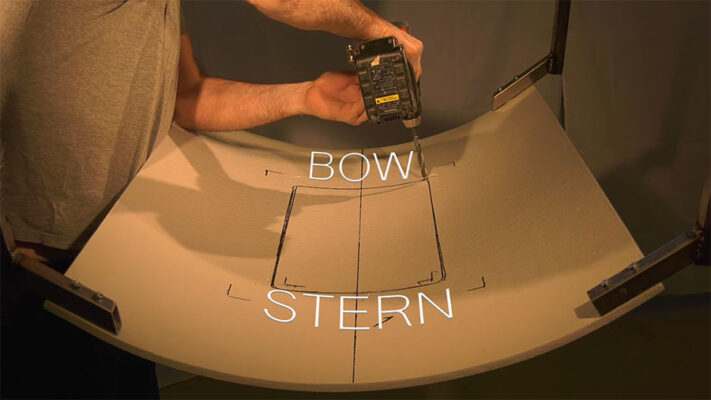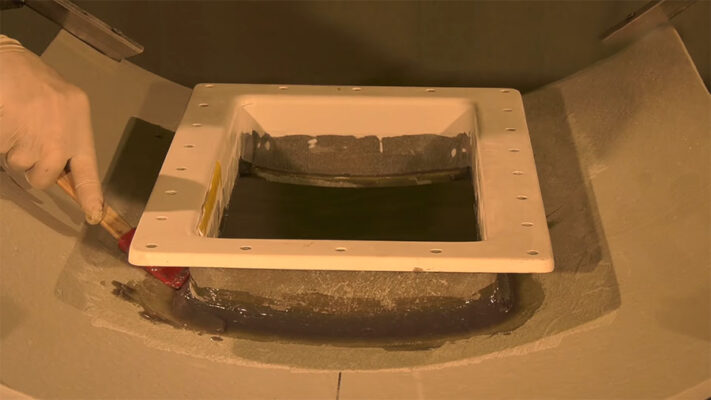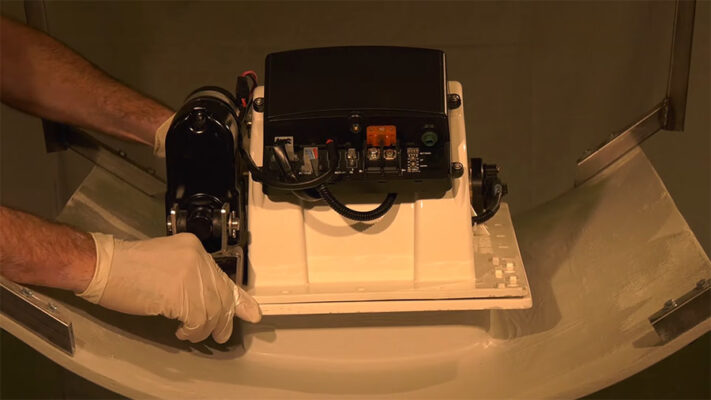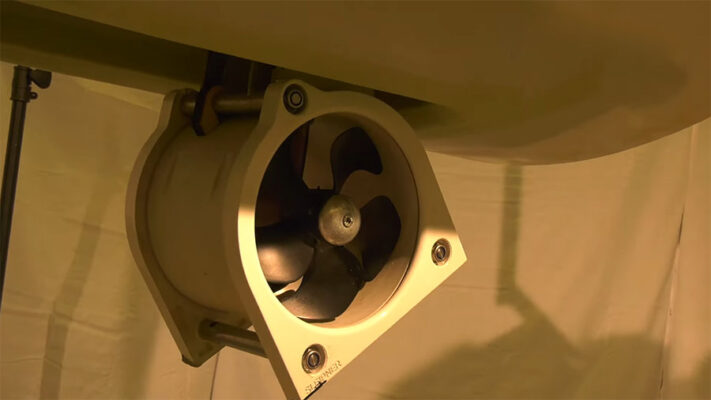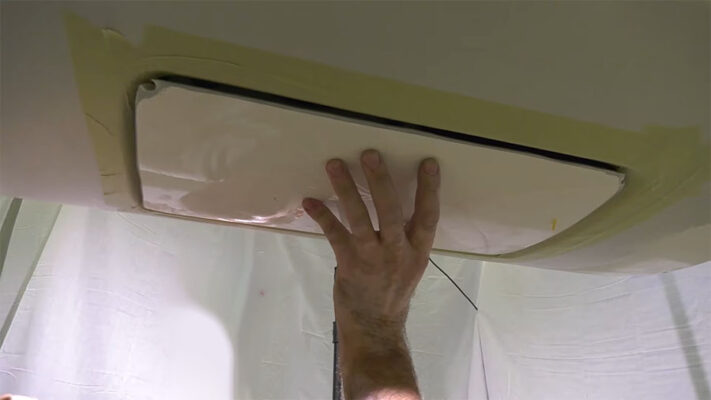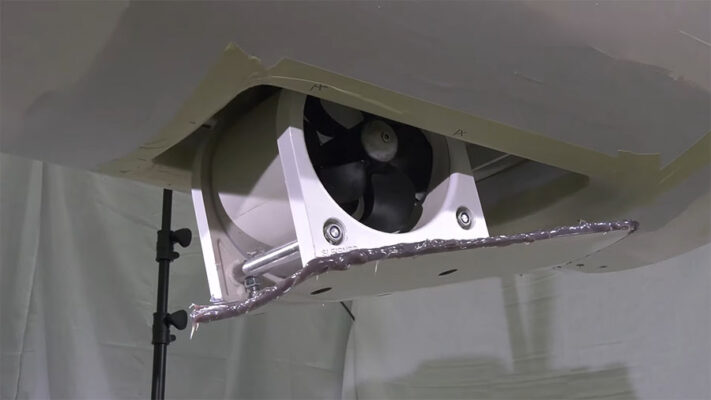Sommaire
Le guide d'achat des propulseurs d'étraves
Bienvenue dans notre guide « Comment choisir et se servir d’un propulseur d’étrave ». Les propulseurs d’étrave sont des équipements utiles pour faciliter les manœuvres en bateau. Installés à l’avant, ils génèrent une poussée latérale pour déplacer le navire de manière latérale ou diagonale.
Composés d’un moteur, d’une hélice et d’un tunnel dans la coque, ils sont faciles à contrôler depuis le poste de pilotage. Les propulseurs d’étrave bateau sont idéaux pour les manœuvres en port ou dans des espaces restreints. Ils améliorent la maniabilité du bateau à basse vitesse et réduisent les risques de dommages ou collision.
Le choix du propulseur dépend de la taille du bateau, des conditions de navigation et des préférences personnelles. Notre guide vous aidera à comprendre et à utiliser ces dispositifs efficacement.
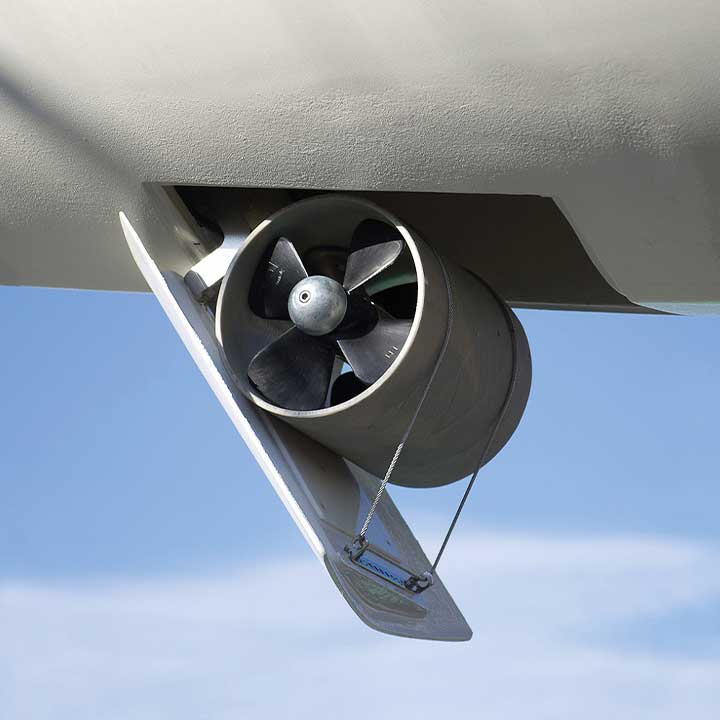
Le guide d'achat des propulseurs d'étraves
Bienvenue dans notre guide « Comment choisir et se servir d’un propulseur d’étrave ». Les propulseurs d’étrave sont des équipements utiles pour faciliter les manœuvres en bateau. Installés à l’avant, ils génèrent une poussée latérale pour déplacer le navire de manière latérale ou diagonale.
Composés d’un moteur, d’une hélice et d’un tunnel dans la coque, ils sont faciles à contrôler depuis le poste de pilotage. Les propulseurs d’étrave sont idéaux pour les manœuvres en port ou dans des espaces restreints. Ils améliorent la maniabilité du bateau à basse vitesse et réduisent les risques de dommages ou collision.
Le choix du propulseur dépend de la taille du bateau, des conditions de navigation et des préférences personnelles. Notre guide vous aidera à comprendre et à utiliser ces dispositifs efficacement.
Qu'est ce qu'un propulseur d'étrave ?
Un propulseur d’étrave est un dispositif installé à l’avant d’un bateau (Yacht, voilier, bateau de plaisance…), sous la ligne de flottaison sur les côtés de la coque. C’est un moteur avec une hélice qui permet de déplacer le bateau de côté ou en diagonale. Cela aide les marins à manœuvrer plus facilement, surtout lorsqu’ils doivent entrer ou sortir d’un port ou se déplacer dans des espaces étroits
Le propulseur d’étrave bateau est composé d’un moteur, d’une hélice et d’un tunnel intégré à la coque du bateau. Le moteur fait tourner l’hélice, ce qui crée un flux d’eau puissant qui pousse le bateau dans la direction voulue, permettant au marin de le déplacer avec plus de contrôle et de précision.
L’avantage d’avoir un propulseur d’étrave est qu’il facilite les manœuvres délicates à basse vitesse. Par exemple, lorsque vous essayez d’entrer dans un espace de stationnement pour bateaux ou lorsque vous devez vous tourner rapidement dans une zone restreinte. Le propulseur d’étrave bateau réduit le risque de collision avec d’autres navires ou les quais.
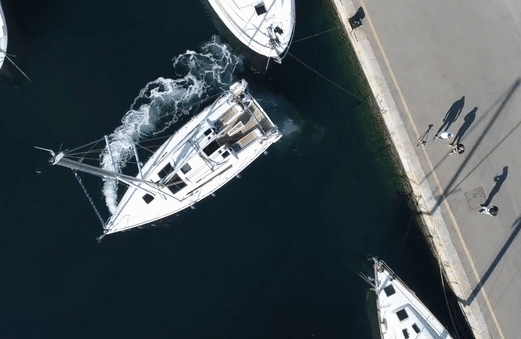
Différents types de propulseurs
Dans un premier temps, on parlera ici de propulseur d’étrave. C’est un propulseur qui se situe à l’avant du bateau (proue) et pousse l’étrave du bateau vers la droite ou la gauche (tribord et bâbord), il peut être électrique ou hydraulique. Mais sachez qu’il existe aussi des propulseurs de poupe qui se place à l’arrière et aide également les navires à manœuvrer.
Parmi les propulseurs d’étrave, on peut trouver 4 types de propulseurs principalement :
Type de Propulseur |
Description |
Pour quel type de bateau ? |
|---|---|---|
| Propulseur d'étrave rétractable | Ce type de propulseur peut être rétracté à l'intérieur de la coque du bateau lorsqu'il n'est pas utilisé. | Bateaux de plaisance de taille moyenne à grande, yachts |
| Propulseur d'étrave tunnel fixe | Le propulseur est intégré à un tunnel fixe dans la coque du bateau, et il reste en place en permanence. | Bateaux de plaisance de taille moyenne à grande |
| Propulseur d'étrave externe | Ce type de propulseur est installé à l'extérieur de la coque du bateau dans un bloc étanche fixe. | Bateaux de plaisance, voiliers, bateaux à moteur |
| Propulseur d'étrave à jet d'eau | Au lieu d'une hélice, ce type de propulseur utilise un jet d'eau pour générer la force de propulsion. | Bateaux rapides, navires de service |
Il existe également des variantes comme des propulseurs rétractables orientables, dont l’hélice peut être orientée pour diriger le flux d’eau dans différentes directions. Ou encore le propulseur d’étrave à double hélice qui utilise deux hélices pour une poussée latérale plus puissante.
Pour simplifier l’achat d’un propulseur d’étrave en tunnel, nous avons confectionné des kits prêts à monté composé de propulseur d’étrave électrique pour voilier ou bateau à moteur, un tunnel, un panneau de commande à joystick, un câble de commande, un coupe-circuit, un porte-fusible, un fusible et d’une batterie. Découvrez nos kits propulseurs tout-en-un.
Propulseur d'étrave en tunnel fixe
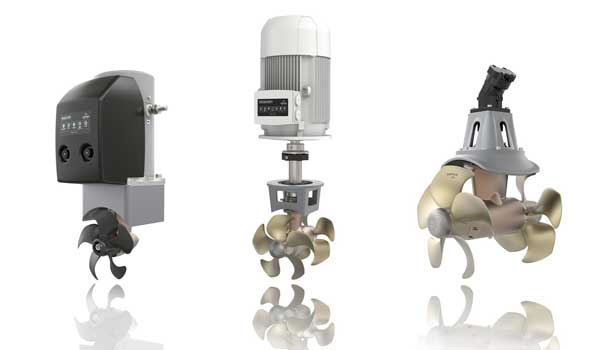
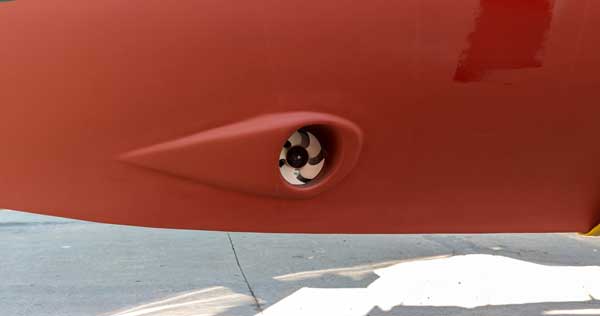
Pour une option flexible et adaptable, le meilleur choix est un propulseur à tunnel bien conçu et installé par un professionnel. Assurez-vous que votre bateau a suffisamment d’espace interne et un accès adéquat à la proue pour une installation correcte. La position du tunnel immergé par rapport à la ligne de flottaison est importante pour des performances optimales et une réduction du bruit.
Les propulseurs en tunnel d’aujourd’hui offrent des fonctionnalités fantastiques. En choisissant un fabricant réputé, vous pouvez opter pour un système avancé qui permet un contrôle précis des propulseurs, similaire à l’utilisation de la pédale d’accélérateur dans une voiture. Cela offre une manœuvrabilité totale dans les espaces restreints et un contrôle facile d’une seule main.
• Large gamme de choix disponibles
• Bon rapport qualité-prix par rapport à d'autres options
• Le dépannage et l'entretien peuvent être effectués sans soulever le bateau.
• Aucune réduction de la vitesse du bateau lorsque le tunnel est correctement installé.
• L'installation nécessite un espace intérieur suffisant dans la coque.
• Le tunnel doit être situé à un minimum de ½ à 1 fois son diamètre sous la ligne de flottaison.
• Certaines émissions sonores sont possibles si le tunnel n'est pas installé de manière optimale.
Propulseur d'étrave rétractable
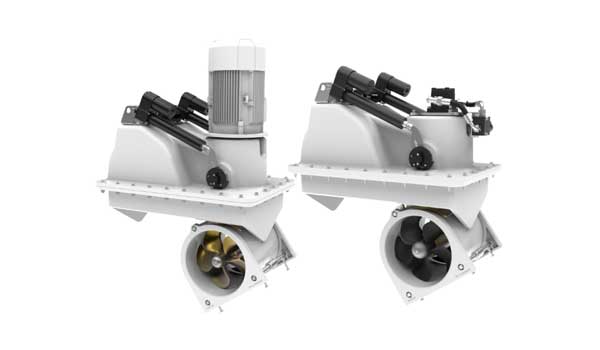
Les propulseurs rétractables gagnent en popularité et peuvent être installés à l’avant ou à l’arrière de la coque. Ils conviennent particulièrement aux yachts sur mesure et aux bateaux à fond plat qui ne peuvent pas accueillir un propulseur à tunnel traditionnel en raison d’un faible tirant d’eau. (Hauteur de la partie immergée du bateau)
Les propulseurs rétractables utilisent des tunnels plus courts abritant des hélices, ce qui les rend plus efficaces et moins bruyants que les installations à tunnel traditionnelles. Les meilleurs propulseurs rétractables sont équipés de protections contre l’échouage et certains permette un contrôle de vitesse variable.
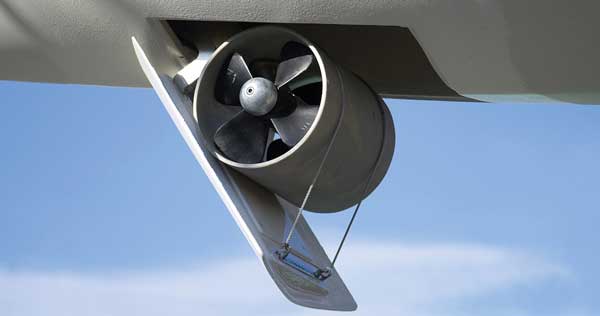
• Poussée efficace grâce à la bonne profondeur et à la longueur réduite du tunnel
• Souvent peu ou pas de bruit
• Nécessite un espace intérieur plus important par rapport à la taille du tunnel
• Plus vulnérable aux dommages dus à une saillie extérieure
Propulseur d'étrave externe
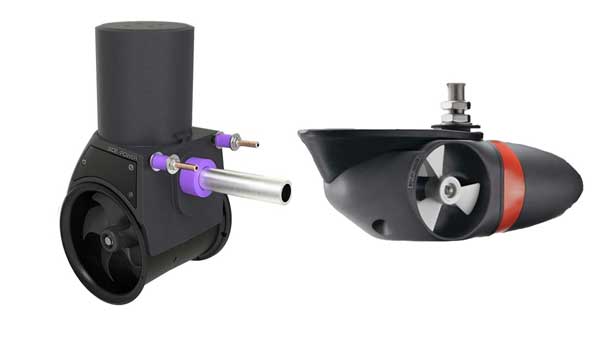
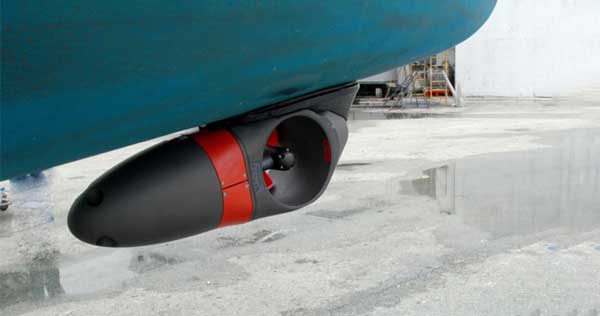
Les propulseurs externes pour bateau sont une option pratique pour les navires disposant de peu d’espace intérieur ou pour ceux qui souhaitent éviter les couts élevés d’installation d’un propulseur rétractable ou d’un tunnel complet. Ils se présentent sous différentes formes, les plus courantes étant les solutions en forme de torpille montées sous la coque. Ces propulseurs bénéficient d’un boitier hydrodynamique qui réduit la trainée et permet une installation plus économique.
Cependant, les propulseurs externes dépassent de la coque, ce qui peut poser des problèmes si vous mettez régulièrement votre bateau à l’eau à l’aide d’une remorque ou si vous le stockez à terre sur un système de piles surélevées. De plus, ils ne conviennent pas aux coques planantes, car ils peuvent augmenter la résistance à l’eau et la trainée associée.
• Plus facile et plus rapide à installer et parfait pour un montage ultérieur
• Efficacité accrue grâce à un positionnement optimal
• Fonctionnement silencieux dans la plupart des cas
• Longue durée de fonctionnement grâce au refroidissement efficace du moteur par l'eau
• Faible encombrement sur la surface de la proue
• Certains effets négatifs de l'augmentation de la résistance à l'eau et de la traînée associée.
• Il faut être prudent lorsque l'on retire la coque, que l'on remet le bateau à l'eau ou que l'on le stocke à terre
COmment choisir un propulseur d'étrave ?
Quel propulseur en fonction de mon bateau ?
Les éléments à prendre en compte pour investir dans un propulseur d’étrave
- Le profil du bateau (fardage) : Plus la carrosserie de votre bateau est longue et haute, plus le propulseur d’étrave doit faire face à la pression du vent.
- La forme de l’étrave et l’espace intérieur : Plus l’étrave est enfoncée dans l’eau, plus l’espace intérieur est important, ce qui facilite l’installation du propulseur.
- Capacité : Plus il y a de vent et de courant à l’endroit où vous naviguez / mouillez, plus le propulseur d’étrave doit être puissant.
- Puissance : les petits bateaux utilisent généralement une alimentation en courant continu, tandis que les bateaux plus grands utilisent une alimentation en courant alternatif ou hydraulique. Si votre bateau fait plus de 60 pieds, vérifiez s’il n’est pas déjà équipé d’un générateur de courant alternatif ou d’un système hydraulique.
- Le budget : La taille, la puissance et les options des différents propulseurs disponibles pour votre bateau varieront en fonction du prix et des exigences d’installation
De quelle puissance ai-je besoin ?
Que vous ayez décidé d’acheter un propulseur d’étrave ou de poupe, ou que vous envisagiez de mettre à niveau une installation existante, vous devrez déterminer la quantité de puissance de poussée requise pour répondre à vos besoins spécifiques.
Par définition, n’importe quel propulseur fera, dans une certaine mesure, le travail. La clé est de s’assurer que votre propulseur choisi fonctionnera comme prévu dans votre bateau en particulier, afin de ne pas sous-estimer ou surestimer la puissance nécessaire au déplacement de votre navire.
Voici un tableau pour vous aider à sélectionner la poussée appropriée du propulseur (en kg) selon la longueur de votre navire et le fardage :
| Longueur du navire | Fardage léger | Fardage moyen | Fardage lourd |
|---|---|---|---|
| Jusqu'à 10 mètres | 30 kg | 50 kg | 80 kg |
| 10 - 15 mètres | 50 kg | 80 kg | 120 kg |
| 15 - 20 mètres | 80 kg | 120 kg | 180 kg |
| 20 - 25 mètres | 120 kg | 180 kg | 240 kg |
| 25 - 30 mètres | 180 kg | 240 kg | 300 kg |
Veuillez noter que les valeurs indiquées sont des estimations générales et peuvent varier en fonction d’autres facteurs spécifiques à votre bateau. Nous vous recommandons de consulter les spécifications du fabricant du propulseur.
position et installation du propulseur d'étrave
Nous l’avons vu, la taille du propulseur dépend de plusieurs facteurs : le fardage, la pression du vent sur le bateau et la poussée requise pour contrer cette pression. Mais un bon positionnement du propulseur permettra aussi d’optimiser ses performances.
Propulseur à tunnel
Ou positionner mon propulseur en tunnel ?
La position du propulseur dépendra de la structure interne et externe du navire. Pour une performance optimale, un propulseur interne en tunnel doit être installé comme suivant:
- Le plus en avant possible pour maximiser l’effet de levier (Fig 1)
- 1 x Ø (0.75 x Ø minimum) en dessous de la ligne de flottaison pour empêcher l’air d’être aspiré dans le tunnel (Fig. 2). Ø= Diamètre du tunnel
- Longueur minimale du tunnel conseillé 2 x Ø.
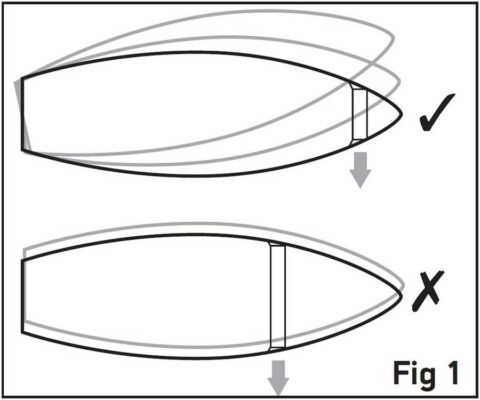
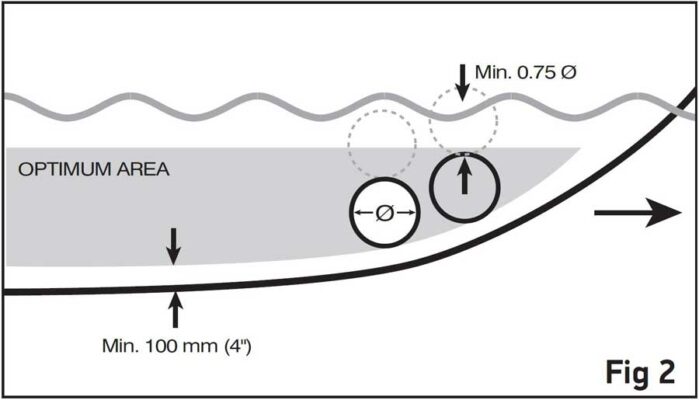
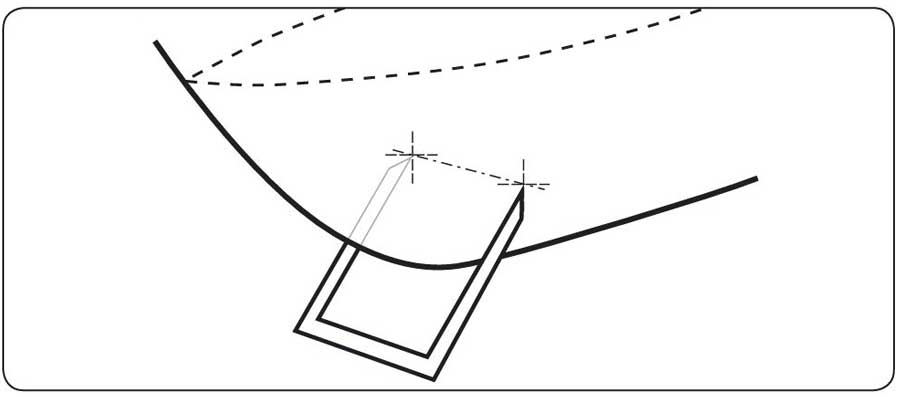
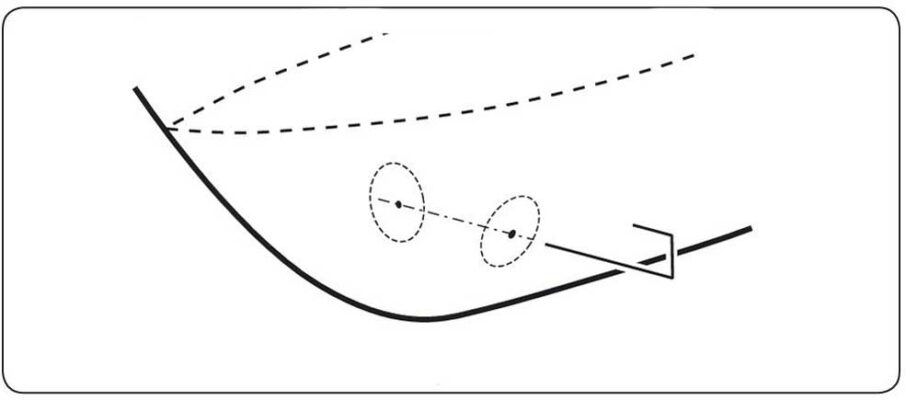
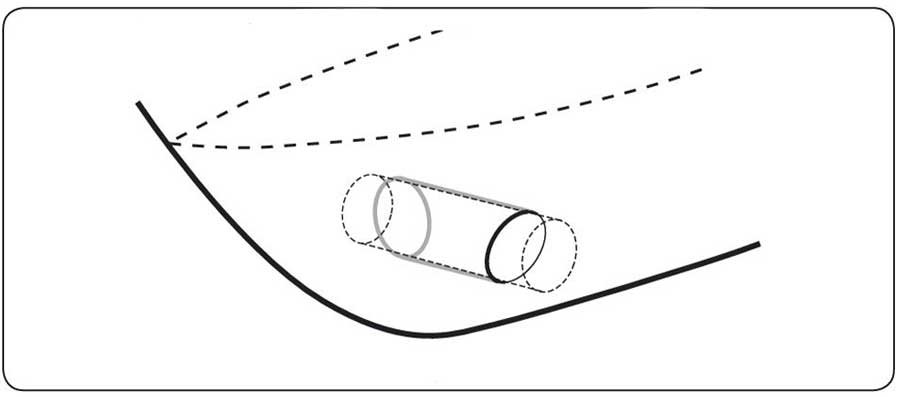
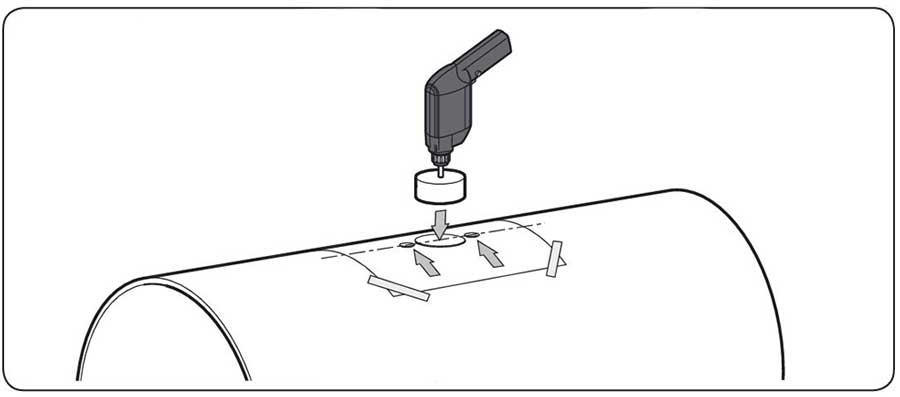
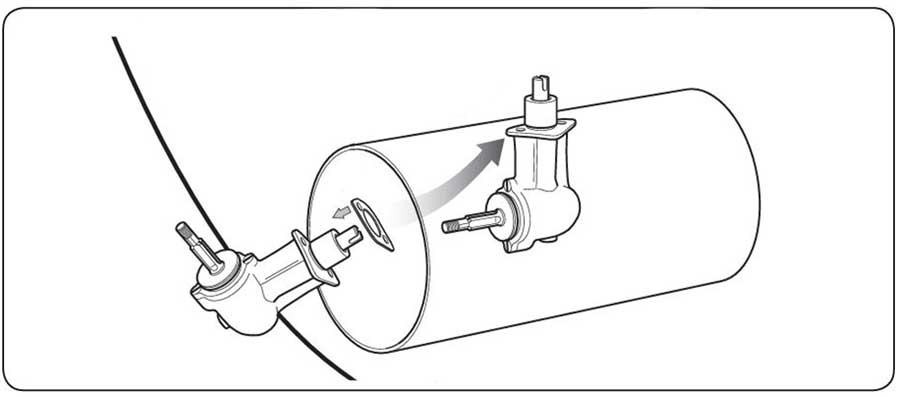
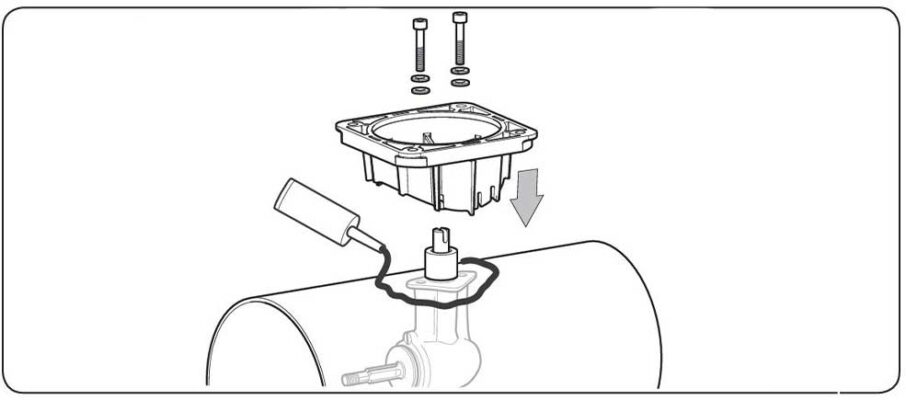
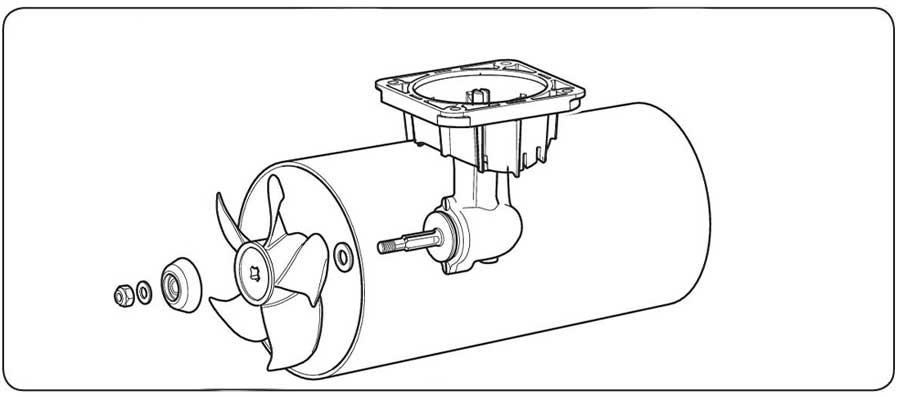
Installation propulseur tunnel
L’installation d’un propulseur avec tunnel est technique et doit être effectuée par un professionnel :
- Préparation de l’emplacement : Assurez-vous que la zone où le tunnel sera installé est libre de tout obstacle et propre. Vérifiez les dimensions, le diamètre et l’emplacement précis du tunnel conformément aux recommandations du fabricant.
- Découpe du trou : Utilisez des outils appropriés pour découper le trou dans la coque du bateau, selon le diamètre du tunnel. Veillez à suivre les instructions du fabricant pour obtenir un ajustement précis.
- Installation du tunnel : Placez soigneusement le tunnel dans le trou découpé, en vous assurant qu’il est correctement aligné et positionné.
- Effectuez l’étanchéité : Appliquez un matériau d’étanchéité recommandé, type résine époxy sur les surfaces du tunnel en contact avec la coque du bateau. Cela garantira l’étanchéité et empêchera les infiltrations d’eau.
- Perçage du tunnel : Percez le tunnel afin de pouvoir y fixer le propulseur
- Installation du propulseur : Insérez soigneusement le propulseur face au trou découpé, en vous assurant qu’il est correctement aligné et positionné.
- Raccordement électrique : Effectuez les connexions électriques nécessaires en suivant les instructions du fabricant.
Propulseur externe
Les propulseurs externes sont beaucoup plus simples à installer et ils peuvent être utilisés en tant que propulseur d’étrave (à l’avant du bateau) mais aussi comme propulseur de poupe, à l’arrière
Ou positionner mon propulseur externe ?
L’installation d’un propulseur externe à l’étrave ou à la poupe est rapide et simple, mais il est essentiel de faire appel à un professionnel qualifié pour effectuer cette opération. Pour obtenir une performance optimale à l’étrave, le propulseur doit être monté le plus bas et le plus à l’avant possible, généralement à minimum 30 cm sous la ligne de flottaison, mesuré à partir du centre de l’hélice.
De même, pour un montage à la poupe, il est préférable de placer le plus bas et le plus à l’arrière possible, avec une profondeur d’environ 30 cm sous la ligne de flottaison. En respectant ces recommandations de montage, le propulseur peut fonctionner efficacement et contribuer à une meilleure manœuvrabilité du bateau.
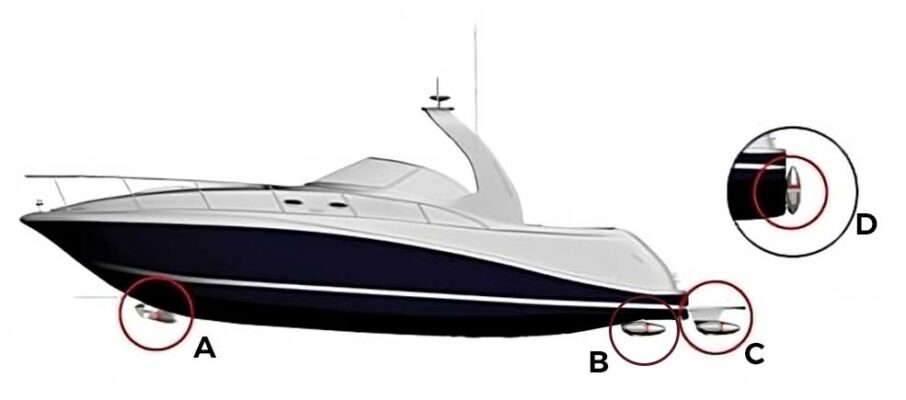
Plusieurs positions et emplacements sont possibles pour un propulseur externe sur un bateau à moteur
Propulseur d’étrave:
- Montage à l’avant du bateau sous la coque juste sous la ligne de flottaison
Propulseur de poupe, 3 choix s’offrent à vous :
- Montage propulseur arrière externe classique sous la coque
- Montage du propulseur sur plateforme arrière
- Montage vertical du propulseur sur tableau arrière
Sur un voilier le montage est classique pour un propulseur externe
Propulseur d’étrave :
- Montage à l’avant du bateau sous la coque juste sous la ligne de flottaison
Propulseur de poupe :
- Montage propulseur externe à l’arrière sous la coque

Installation propulseur externe
L’installation d’un propulseur externe est simple, mais doit être effectuée par un professionnel
Préparez l’emplacement : Nettoyez la zone d’installation et assurez-vous qu’elle est lisse.
Marquez les points de fixation : Utilisez les instructions du fabricant pour marquer les points où le propulseur sera fixé.
Percez les trous de fixation : Utilisez une perceuse pour percer les trous aux endroits marqués.
Installez le propulseur : Placez soigneusement le propulseur dans les trous percés.
Fixez le propulseur : Utilisez les vis ou boulons fournis pour fixer solidement le propulseur à la coque.
Étanchéité : Appliquez un produit d’étanchéité type Sika pour faire les joints
Connectez les câbles électriques : Branchez les câbles du propulseur au système électrique du bateau.
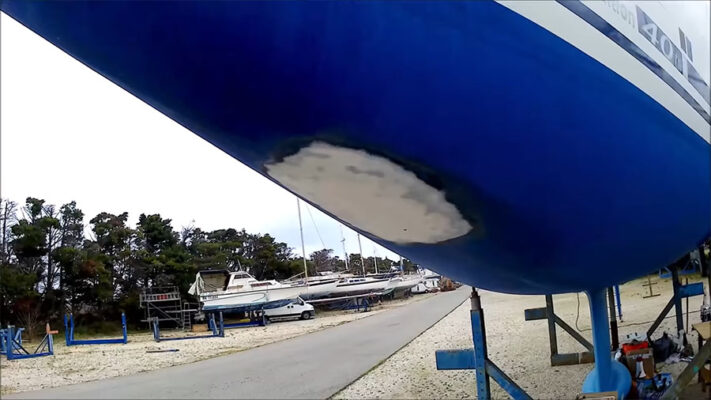
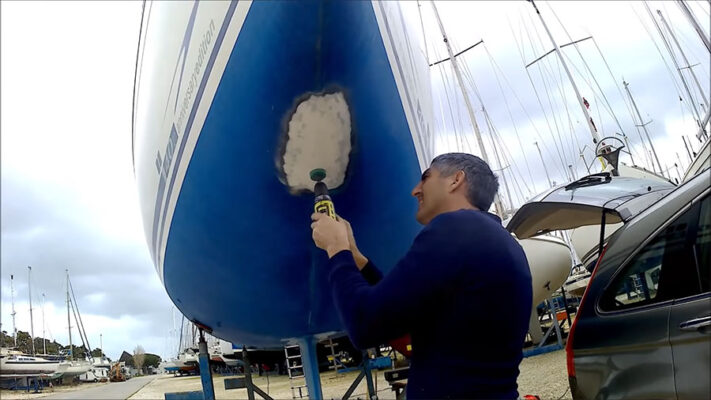
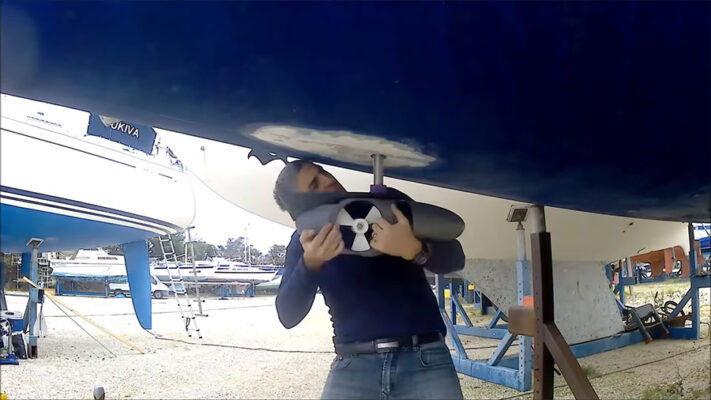
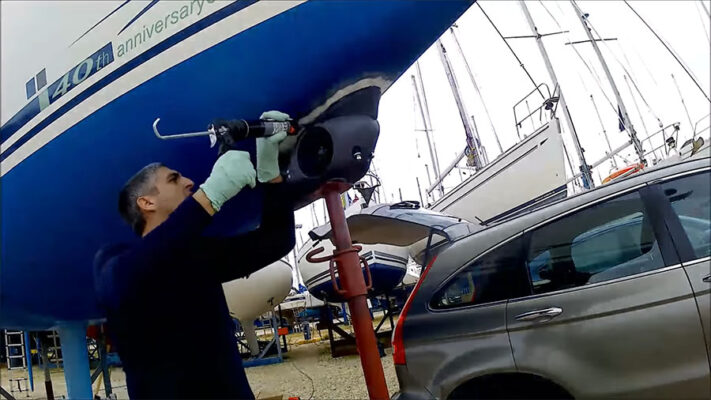
Propulseur rétractable
Un propulseur d’étrave rétractable doit être placé le plus en avant possible sur le bateau. Lorsque le propulseur est en position déployée, le tunnel doit être dégagé de la coque et l’axe central de l’arbre d’hélice doit se trouver en dessous de la ligne de flottaison à une distance équivalant au minimum à 1,5 fois le diamètre du tunnel.
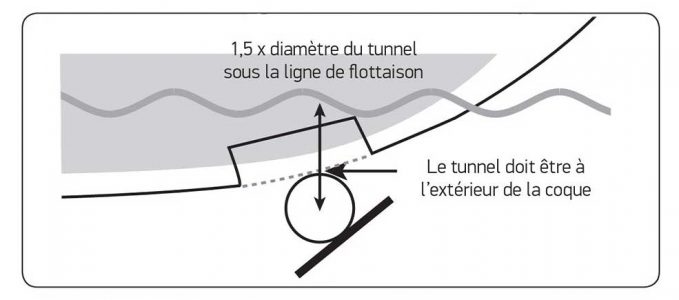
Installation propulseur rétractable
Identifiez l’emplacement du propulseur : Repérez puis tracez l’emplacement de l’ouverture sur la coque.
Découpez l’ouverture : À l’aide d’une scie sauteuse, découpez l’ouverture en respectant les préconisations fabricant
Fixez la contre bride : La contre bride, ou support est insérée dans la l’ouverture
Fixez le propulseur : Alignez le propulseur et fixer le sur son support
Étanchéité : Résinez et étanchéifiez les contours avec les produits recommandés
Câbles électriques : Branchez les câbles du propulseur au système électrique du bateau.
